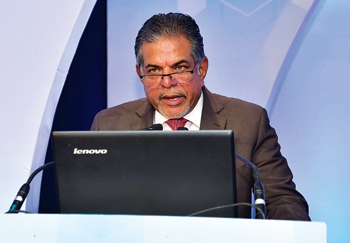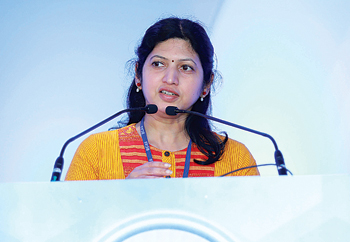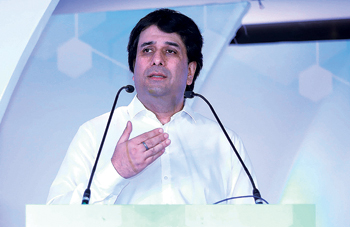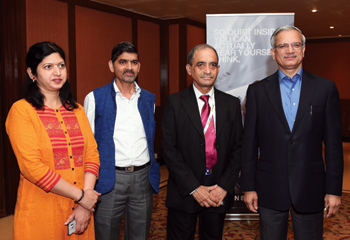In-flight Wi-Fi to Charter Jet Issues: BizAvIndia 2018 Conference Boasts of Major Developments
The fourth edition of the conference by Business Aircraft Operators Association was all about change




The BAOA BizAvIndia 2018 conference held during this year’s edition of Wings India may just have been a sneakpreview of the good things to come for the business aviation sector. Held on the eve of the biennial aviation event in Hyderabad, the conference featured panel discussions with veterans in the field such as BAOA President Rohit Kapur, Founder of the MRO Association of India Pulak Sen, CEO of CAPA Kapil Kaul and many others.
India is poised to be world’s third largest aviation market by 2022 and business aviation has a considerable role to play in that. The need of the hours is a cohesive, planned growth of BA industry and the fourth edition of the event, themed ‘Emerging opportunities for air connectivity: Navigating the future for Business and General Aviation Industry in India’ sought to do just that.
Kapur said, “We feel that BizAVIndia Conference is well-timed and will serve as a prelude to roundtable discussions at Wings India on the role of General Aviation in the economic and social growth of India.” While the attendees discussed the burning issues plaguing the industry as well as the reforms needed, Joint Secretary at Civil Aviation Ministry Usha Padhee stole the show with her refreshing pep talk.
IT’S RAINING APPROVALS
Terming her presence as an antidote to ‘gender bias on the dais’, she said, “Many things have to be put into place (in business aviation sector), which can be addressed in our round table conference with the operators that will be moderated by the Directorate General of Civil Aviation (DGCA). So, you can discuss all your grievances.” She also said that a task force has been formed to take up issues related to general aviation, and efforts would be made to address both policy and regulatory related issues. Padhee admitted that the regulatory changes in the private aviation sector take time saying, “Of course they (DGCA) are slow but there are reasons behind it mainly the lack of confidence-building measures.” Lack of infrastructure, perception issues about private jet operators, over-regulations and the safety as well feasibility of single engine crafts were also discussed. BAOA President Rohit Kapur also echoed the same thoughts at the event. He said, “Regulators all over the world are not really agile. So, what’s really lacking is domain expertise.”
Padhee also gave an ‘official commitment’ to address charter issues in the next two to three months signaling interest of the tourism department in the subject too. As for the burning question of the day – the status of in-flight Wi-Fi, the minister said, “The aviation ministry being the party of interest has spoken in favour of this issue. So far, the in-principal approval is done. Now, it’s just a matter of time.”
ISSUES OF THE MOMENT
The conference also set the stage for the unveiling of Deloitte Haskins & Sells report about the impact of GST for BAOA. The BAOA President also stressed that it’s imperative to understand the consequences of GST. Under the new directives, indirect cost on rental aircraft services will increase from 15 per cent to 18 per cent proving to be a higher burden on the end consumer. The report also pointed out that the 5 per cent GST on import of aircraft for purchase and lease will spike the working capital requirements. Moreover, terms such as ‘economy class’ and ‘other than economy class’ are vague and not defined. Especially since the economy class attracts 5 per cent GST while the latter attracts 12 per cent.
In an earlier interview with SP’s, Kapur had said, “We still need to iron out a lot of issues on GST, so we are also preparing a report to take to the GST council.” He also discussed creating an infrastructure for general aviation to create ease of ownership as well as operation.
RCS TRICKLE-DOWN
Executive Director (RCS), Airport Authority of India (AAI), G.K. Chaukiyal was also a part of the panel and shed light on non-scheduled air operators (NSOP) in UDAN scheme. “NSOPs have been participating in both rounds of (UDAN) biddings. In the first round, 84 routes were awarded and in the second round, the NSOPs including helicopters have 30 per cent to 40 per cent of the routes,” he said, adding that 56 airports, 31 helipads as well as 275 parking bays are expected to come up too which would benefit general aviation sector too. He also pointed out that Ministry of Tourism and Ministry of Defence have come forward to share their assets, which will greatly help in boosting infrastructure for admission growth. He also pointed out that “60 Indian Air Force airports have been notified in UDAN II.”
“Of course they are slow (DGCA) but there are reasons behind it… mainly the lack of confidencebuilding measures,” Usha Padhee, Joint Secretary, MoCA
The Joint Secretary agreed too. “These airports and heliports are being developed as part of the government’s efforts to provide connectivity to unserved cities and towns with the potential to offer aviation services. The Centre has set apart 4,500 crore to develop these,” Usha Padhee said.
About 15-16 airports in the country account for over 80 per cent of the total air traffic and with the country on its way to an aviation boom, commercial and business aviation operators are feeling the burn. Padhee also said, “All airports in India are getting choked, and it has become difficult to offer slots to airline operators. This has forced major airliners to change their business models, and take to smaller aircraft to offer services.”
However, the infrastructure boost is just the trailer before the show begins. Indian aviation still has miles to go before it arrives at the top. As Kapur puts it, “All these developments need collaborative efforts from all the regulators and associations of the industry. In addition, the Ministry and DGCA should also collaborate to grow the sector. From the industries-side, there is consolidation taking place and there is an understanding that if new aircrafts are being added then equal number of them is being shut down,” adding that he hoped that the second phase will concentrate on business aviation operators as well as helipods, seaplanes and others.





